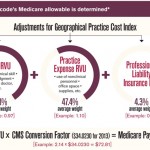
Lately I have been discussing American Medical Association (AMA) membership with various people, and the responses I get are very interesting. There is a flood of feelings that exude from normally calm individuals when the AMA is mentioned. It has become a sociology experiment to see what responses I will receive when the AMA is mentioned. As a researcher of sorts, I started to ponder the issue further: Why are so many people upset with the AMA? Does the AMA represent physicians? Does it represent me? If I’m forced to acknowledge the importance of the AMA, what can be done to improve it?
Why Are Physicians Upset?
Some of the overwhelming responses I’ve received from physicians focus on the AMA’s stance on hot-button issues. For example, there seems to be a lot of angst about the AMA’s position on healthcare reform—and in many cases the anxiety started way before the Affordable Care Act discussion began. The physician community, much like the rest of the United States, is divided on healthcare reform. Other rheumatologists comment that the AMA is too concerned about surgical specialties or, conversely, too concerned about primary care. This is interesting because it would be virtually impossible for the AMA to be pro–primary care and pro–surgical specialties at the same time.
After 27 years in practice, it has become common nature for me to see a problem and want to fix it. So, what can be done to “fix” the AMA? First, let’s dig deeper, look at the “problems” that need fixing. Why was the decision made to support aspects of the Affordable Care Act? It wasn’t just a few physicians sitting around in a room making these decisions. The decisions were made by physicians in various practice settings across the United States voting in a democratic fashion. If the AMA isn’t representing you or me, one possible explanation is that so many of us have left the AMA; therefore our voices are no longer heard and the only voice left is that of “one type of physician.”
Is the AMA perfect? Far from it, but, until or unless another larger or more recognized group arises, the change needs to happen from within the existing structure of the AMA. We need people to join the AMA to make the change….I am now asking you to join.
Another reason for declining AMA membership is the various requests for physicians to be members of specialties, subspecialties, state societies, counties, etc. While belonging to such societies (particularly the ACR, of course) is beneficial, such societies fragment physicians into interest groups. This is when physicians are often criticized as “circling the wagons and shooting inward.” The AMA counters these trends, whether we like to admit it or not, by serving as a highly regarded, unified voice for physicians. The AMA brings together varying interests and hammers out compromise. It is time to take back the AMA. Rheumatologists need to join the AMA in droves so that our voice can be heard and the AMA will be tilted in our direction.
What Have You Done for Me Lately?
I have something to confess: I rejoined the AMA during the last big ACR push for members in 2007. I was asked to join so the ACR could reach the magical number of 1,000 members needed to remain part of the AMA Federation. The AMA delegates told me to let the AMA prove their worth to me. I have now been a member for five years. I don’t approve of everything the AMA does, but I know that by being a member, I have a voice. Furthermore, the businessman in me sees the folly of abandoning an established and publicly respected brand. I am, instead, attracted to turning the significant resources of the AMA to my advantage, which is precisely why the association exists.


